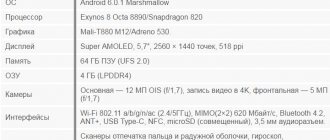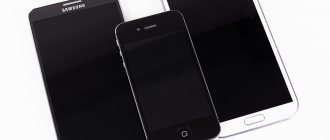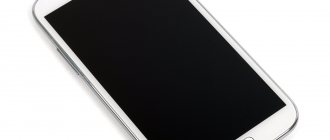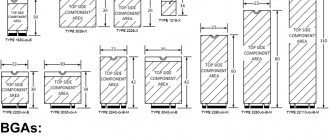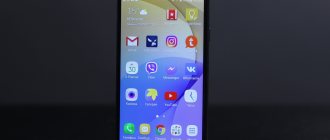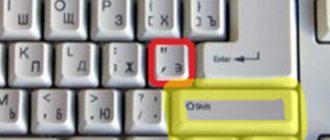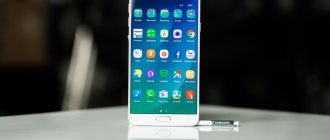But at the same time, they are also boring. It is quite difficult to build something special out of metal, so it turns out that almost all metal models are similar to each other from the back. Another thing is glass: smartphones with both the front and back parts made of Gorilla Glass or something similar look very fresh and nice. Yes, there are certain questions about the reliability of this material (glass is much easier to damage than metal), but this is the price to pay for that very beauty and unusualness.
Apple was the first to release a smartphone with a glass body – we are talking about the iPhone 4 of 2010.
Then there was some lull, and even the Cupertino company itself switched to metal in subsequent devices, but by 2020, glass models appeared in the lineups of most manufacturers. In this material, we have collected ten worthy smartphones in cases made of transparent material.
Meizu U20 (11,990 rubles, glass manufacturer not specified)
The U20 model is an analogue of the Meizu M3E. The main difference between them is precisely the case material: in the latter case we are talking about metal, but in the case of Meizu U20 we have glass. The device is quite good for its price: a high-quality Full HD screen with a diagonal of 5.5 inches, a 3260 mAh battery, a fairly fast MediaTek chipset with an 8-core central processor.
Alternatives from the Meizu line: U10 - essentially the same, but more compact and a little cheaper.
LG G6 (51,990 rubles, Gorilla Glass 3 and Gorilla Glass 5)
LG used glass for the first time in this model; previously it preferred plastic (G, and), leather () and metal (). It is curious that the front part of the smartphone is covered with Gorilla Glass 3, and the back with the more modern Gorilla Glass 5. Well, the most interesting thing is that the G6 complies with the American military standard MIL-STD-810G. This means that the smartphone can be dropped onto a hard surface from a height of a meter, and the case will not shatter into thousands of fragments. It is clear that it is better not to experiment (out of sin), and yet this fact enhances the feeling of reliability.
Alternatives from the LG line: none.
Middle class and state employees
This includes phones up to 20 thousand rubles. Of course, the choice here is narrow, since most smartphones in this class are made in either a metal or plastic case.
Xiaomi Mi 9T (aka Redmi K20)
Up to 20 thousand rubles, the coolest smartphone is the Mi 9T from Xiaomi, and not only among glass models, but in general. There is an Amoled screen with Gorilla Glass 5 and HDR support, on the back there is a camera with 3 modules with a resolution of the main sensor of 48 megapixels. There is also an f/1.8 aperture and autofocus. Additional cameras – with tele and wide-angle optics. By tradition: look for examples of camera photos in the Xiaomi Mi 9T review.
What else is good:
- The best processor in the mid-range is the new 8nm Snapdragon 730 chip.
- Large 4000mAh battery, 18W fast charging.
- Retractable front camera that does not take up screen space. True, it does not have autofocus (there are no front cameras with autofocus in the middle class).
- Headphone output 3.5 mm, NFC, radio, Bluetooth with aptX HD support.
There is nothing cooler on the market under 20 thousand rubles, especially in glass. Feel free to take the Xiaomi Mi 9T – it gives you 100% bang for your buck.
Xiaomi Mi 9 SE
Mi 9 SE on the left;
Mi 9 – on the right The full-fledged Mi 9 is a flagship, it is also glass and generally a cool device in its class, but the “middle class” includes the Mi 9 SE model with a Snapdragon 712 processor, an Amoled screen and a camera with regular, telephoto and wide-angle optics . The smartphone turned out great, it sells well and collects positive reviews.
Characteristics:
- Glass body, screen with Gorilla Glass 5 and HDR support.
- The 10nm Snapdragon 712 chip is a less powerful chip compared to the Mi 9T, but still not bad.
- The main camera sensor is 48 megapixels, f/1.8 aperture, telephoto and wide-angle cameras are included.
- There is NFC, an in-screen scanner, and fast charging.
The disadvantages include a 3070 mAh battery, which will not provide high autonomy. Plus, there is no 3.5 mm headphone output and a slot for a flash drive. And although the smartphone has Bluetooth with aptX HD support, the sound over the air a priori cannot be as high quality as with wired headphones.
Meizu 16Xs
The Meizu phone is becoming one of the best in the middle class; it has an 11nm Snapdragon 675 processor, an Amoled screen with infinite contrast, and most importantly, a glass body. Unfortunately, it is not indicated what kind of glass is used here; it is possible that it is weak or cheap.
The device features a decent camera with a resolution of 48 megapixels and wide-angle optics on the main module. This is the only smartphone in the world where the main camera received such optics, and this is an interesting solution. Inside there is a 4000 mAh battery, fast charging. There is also a headphone jack, but no stereo speakers, NFC, or memory card slot.
Meizu 16Xs is an inexpensive phone and is worth the money, but the lack of NFC is a big minus.
Redmi Note 7 and Redmi Note 7 Pro
Both phones from Xiaomi are made in a glass case, with Gorilla Glass 5 protection on the front and back, which is cool considering the low price of these models. There are only two differences between the phones – processor and price. The Pro version received a new 11nm Snapdragon 675 processor, which means it is better in terms of performance. But this affects the price - Note 7 Pro is more expensive at 2-2.5 thousand rubles.
Unlike previous models, there are IPS screens, no NFC chips, but inside there are large 4000 mAh batteries and fast charging.
It was Redmi Note 7 that became the best-selling smartphone on the market; see the review of the smartphone here. Please rate the article:
Huawei Honor 8 (RUB 24,990, Gorilla Glass 3)
Perhaps one of the best mid-range smartphones today. On the back there is a dual camera with shooting quality similar to that of the flagship Huawei P10, on the front there is an excellent 5.2-inch screen with a resolution of 1920 x 1080 pixels. Inside is a quite powerful 8-core Kirin 950 platform. Plus, there is not 3 GB of RAM, as one might expect, but all 4. In general, it’s almost a flagship at a mid-class price. And yes, the blue variant of Honor 8 is better than all the others. Just remember.
Alternatives from the Huawei line: the same Honor 8 Lite, for example. Easier and cheaper. But the third model of this family, Honor 8 Pro, is not glass, but metal. So you should only look in its direction if the glass case is not important to you.
Samsung Galaxy S8 (54,990 rubles, Gorilla Glass 5)
The most flagship rasflagship to date. It has all the possible and impossible options - we won’t even list them; they are described in great detail in the review and in the news dedicated to the announcement of the G8. And yes, don’t be alarmed by the lack of a dual camera on the back panel: the Galaxy S8 (as well as the Galaxy S7) can blur the background in pictures even with one lens.
Alternatives from the Samsung line: Galaxy S7 and Galaxy S7 Edge are also glass - and quite relevant. Moreover, the Galaxy A 2020 cases are also made of this material. And they cost even less than the “sevens”. In general, Samsung has a wagon and a small cart of options.
HTC U Ultra (RUB 47,990, Gorilla Glass 5)
This device is interesting due to the presence of an additional screen designed to display notifications and service information (HTC obviously picked up the idea from). Otherwise, the HTC U Ultra - as well as the LG G6 - can be classified as the flagships of the previous generation: these devices do not use the latest Snapdragon 835, but a slightly outdated (although never slow) Snapdragon 821. Well, one more thing: There is a special version of the HTC U Ultra, in which the memory capacity is increased from 64 to 128 GB, and Gorilla Glass 5 is replaced by sapphire glass. This version costs 54,990 rubles in Russia.
Alternatives from the HTC line: U Play model. Yes, it does not have a second screen, and the characteristics are simpler, but it costs significantly less. Offering exactly the same design.
Why you don't need a smartphone with a glass body
Recently, smartphone manufacturers are increasingly using special glass for the case. The first solution was the iPhone 4, then Sony Xperia Z and Samsung Galaxy S appeared. Today, there are more than enough models with a glass body: these are all modern flagships, including the iPhone X, Samsung Galaxy S9 and Huawei Mate 10 Pro. Let's see why you don't need a smartphone with a glass body. Why does this material infuriate users?
The glass slides.
This means that the chances of accidentally dropping and breaking an expensive device increase exponentially. Moreover, modern smartphones are equipped with very impressive displays. It is very disappointing to break a device, because repairs will be expensive. You will not only need to buy a case for your smartphone, but also replace the screen, which will most likely also break. And the glass glides perfectly on any smooth horizontal surfaces.
Glass collects fingerprints.
We don’t argue that a glass smartphone looks modern and somewhat futuristic. But all this beauty will quickly fade when the perfectly glossy shiny surface becomes covered with fingerprints. You won’t be able to avoid this development of events only if you don’t use the gadget.
But what about the oleophobic coating - you ask. The question is logical, but it does not solve the problem, but postpones the inevitable by a couple of months. The only salvation is a high-quality case that will cover the easily soiled glass parts.
The glass is scratched.
Even if your smartphone has Gorilla Glass 5 coating, this does not mean that the body will not be covered with scratches. Protective glass can withstand pressure and shock, but is less resistant to scratches. Place your new smartphone with keys or other sharp objects a couple of times, and they will leave a mark on the perfectly glossy glass surface. Well, if the smartphone is covered with Gorilla Glass 5 on both sides, the chances of scratching the device again increase significantly.
Glass breaks.
The protection saves the glass case only from minor impacts, but does not make it shock-resistant. A fall from a significant height is always fatal. The lids will shatter into pieces, exposing all the internal elements. This is unlikely to happen with a metal case.
Glass does not conduct heat well.
This results in overheating of the processor and other elements, which ultimately leads to throttling. The processor frequency sags and the FPS in games drops. If the situation repeats regularly, this entails inevitable damage to the battery.
Why do manufacturers continue to use glass?
Taking into account all of the above, the use of material for the production of smartphone cases looks at least strange. Why do manufacturers continue to impose such solutions on us? Let's figure it out:
- It is beautiful. Glass devices in photographic materials and shop windows look literally brilliant. And this pushes you to another impulsive purchase of “that shiny phone.”
- It's stylish. Glass allows you to implement non-standard design solutions that cannot be implemented in aluminum or plastic cases.
- This allows you to install wireless charging. Metal simply does not let the signal through!
What to do? Look for alternatives. After all, plastic and ceramics also allow for the implementation of unusual solutions, including the wireless charging function. Who knows, perhaps ceramics, which is still quite exotic, will become a new trend in the production of cases for smartphones.
Xiaomi Mi 5 (19,990 rubles, glass manufacturer not specified)
By smartphone standards, this is already an old man (announced in February 2016), but the old man is vigorous. Largely because today the official Xiaomi Mi 5 costs only 19,990 rubles, offering for this money a glass body, a still quite productive Snapdragon 820 platform, a high-quality screen, and a good camera. And in just over a year, Xiaomi Mi 5 was cured of childhood diseases, which are often found in new models from the Chinese company. In general, it’s quite an option.
Alternatives from the Xiaomi line: the new flagship Mi 6, which is not yet officially sold in Russia, and the huge Mi Mix, which is still being brought to us. The latter, however, is not entirely glass - the back panel of the device is ceramic. But the tactile sensations are the same as from glass.
Well, why do that?
I am sure that in every company that produces smartphones there are people who understand all this. But it seems they have stopped listening to them. Apparently, three advantages outweigh the scales:
⚜ Glass looks rich
The glass in the smartphone literally screams about the premium nature of the device. The light shimmers beautifully inside the panel, and the body itself is pleasant to the touch.
And it doesn’t matter that the smartphone will be like this five or six times, and then only on holidays. A shiny brick made of glass and iron is easier to sell .
